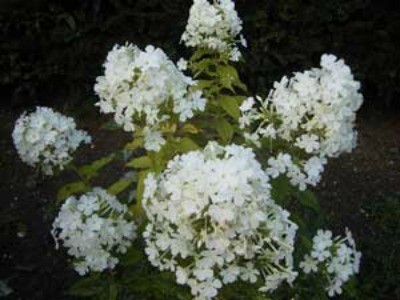
Botanical Name:
Phlox
Life Cycle:
perennial ( some annual varieties)
Planting Time:
spring
Height:
6' to 4'
Exposure:
sun to shade depending on phlox type
Soil:
average to rich, moist, well-drained soil
Hardiness:
zones 3 to 8
Bloom Time:
summer
Flower:
variety of colors including crimson-red, magenta-pink, white, pink, lavender and purple
Foliage:
narrow green leaves on sturdy upright stems
Propagation:
seeds and cuttings
Suggested Use:
beds, borders, rock walls, mass plantings, and groundcover mats
Growing Hints:
Several species of phlox are commonly grown in the gardens of North America. Moss phlox is a low growing variety that thrives in full sun. Wild blue phlox and creeping phlox both form broad clumps of fragrant flowers suitable for shade gardens. Tall garden phlox needs staking and is most susceptible to powdery mildew. Annual varieties can be grown from purchased transplants or seeds sown directly into the garden several weeks before your last frost date. Perennial phlox should be started from purchased plants to ensure you get the exact colors you desire. Phlox are low maintenance with the exception of being susceptible to powdery mildew. Cut off spent flower heads to keep plants blooming and to avoid future seedlings of different colors from crowding out your original plants. Divide plants in the spring after flowering or take cuttings in the summer to flower the following year.
Interesting Facts:
New cultivars resistant to powdery mildew include David', Pax', Katherine' and Sandra.'
